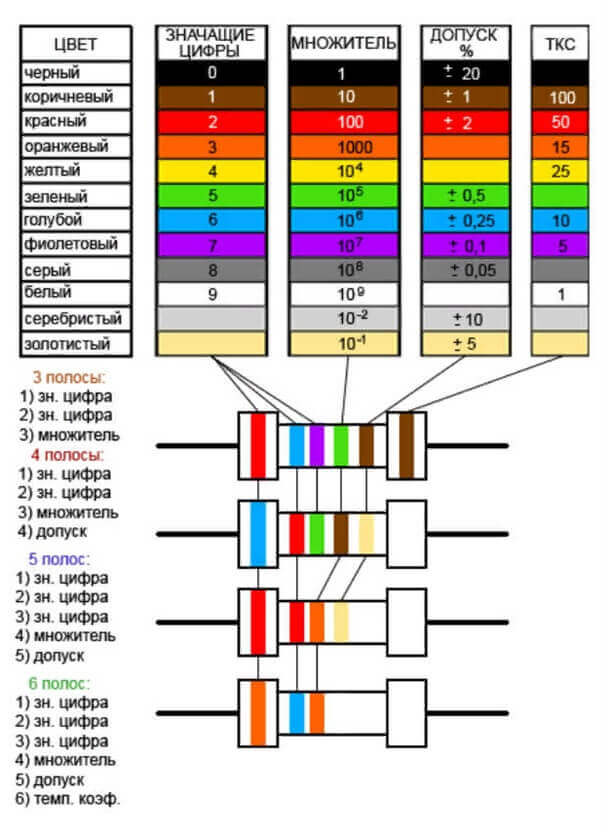Color Resistor Calculator
To distinguish between electronic components - resistances, capacitors, etc. - marking is needed. With its help, denominations of elements are indicated. Resistors are labeled in two main ways: alphabetic or digital, as well as color. We talked about this in more detail in the article:https://our.electricianexp.com/en/kak-markiruyutsya-rezistory.html.
If in most cases letters can be dealt with without auxiliary materials, then color coding is quite difficult. It is a set of strips or rings (actually applied around the entire circumference of the element’s body) in different colors. Each of them carries certain information, for example, numbers, multiplier, tolerance. They differ in color and each of them carries certain numerical information.
Distinguish depending on the nominal and tolerance on the accuracy of color marking options, consisting of a different number of labels, consider them in more detail. You can find out how the color marking of resistors is decrypted, using our online calculator:

In addition, a table can be used for decryption:
The marking of 3 bands indicates that the resistor has an accuracy class of 20%, then the first and second bands are numbers, and the third is a factor.
Attention! Silver and gold colors cannot act as numbers, usually only in the role of tolerance and multiplier. This will help to find the left and right side of the resistor in order to correctly determine the value. Not all resistors have the first ring shifted to one side. Using an online calculator will help automate and speed up the process of determining the value of a resistor by color, you just have to choose the right one for power for a specific task.
According to the table, numbers and factors are determined by color.
- 4-way marking is used to designate resistors with a tolerance class of 5-10%, it is encrypted in 4 bands, the first three are similar to the previous one.
- 5 bands contain more information about the face value, here the first 3 are numbers, 4 is the factor, and 5 is the tolerance.
- TO color-coded 6-band resistors a temperature coefficient has also been added, which characterizes the degree of change in resistance to temperature change.
It is worth noting that our calculator allows you to determine online markings of the most common types of resistors in 4 and 5 bands. You can easily determine 3-way using the table above, and 6-way options are very rare.
To determine the face value you need to go through three steps:
- Look at the resistor and find where it starts marking.
- Enter data in the online calculator and indicate the accuracy class.
- If in doubt, you can re-enter the data, but in the reverse order, perhaps you looked at the component from the wrong side.






